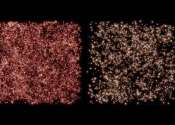NASA's Roman mission will test competing cosmic acceleration theories
A team of scientists has predicted the science return from one of NASA's Nancy Grace Roman Space Telescope's groundbreaking planned surveys, which will analyze millions of galaxies strewn across space and time. The mission's ...









